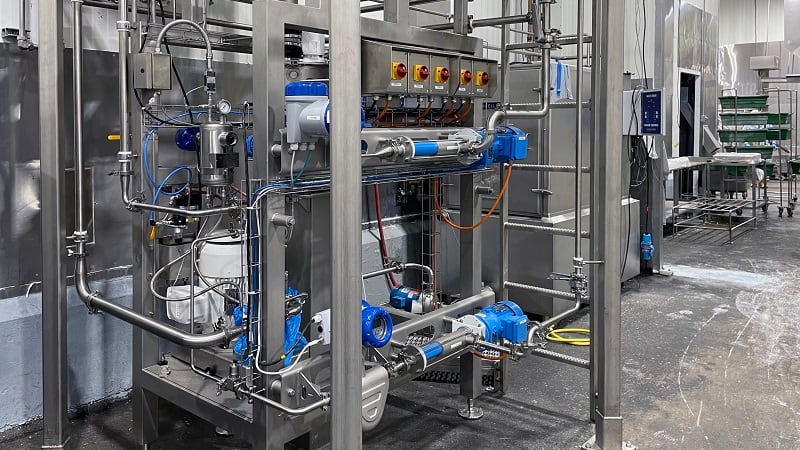Venture firms now invest more in alt-protein companies that can address a specific scalability challenge or provide software or services to improve manufacturing processes, explained Steve Molino, partner and head of investments at Clear Current Capital, during a Good Food Institute (GFI) webinar.
“It really is more around the [business-to-business]-enabling technology companies across the different verticals in alt protein. So, these are the ones that instead of creating a food product themselves, they might be having a technology solution ─ that could be hardware, software [or] a combination of both ─ that reduces costs or reduces hurdles across the supply chain,” Molino elaborated.
He added, “There is a lot of interest right now in companies that are reducing either upstream or downstream processing costs in fermentation, whether that is precision or biomass fermentation because that is a key hurdle, and that can create value, but they are also applicable to anybody using fermentation as a technology to produce something. So, that means it is applicable to pharma companies, biotech, etc. So, that de-risks it from a revenue standpoint, [and] it de-risks it from a funding standpoint.”
‘Not every company is built to go from soup to nuts ... and that is OK’
While VCs might be changing focus, alt-protein companies cannot go it alone when it comes to building their plant and still need the support of venture capital investment, noted Etan Bendheim, co-founder and COO of precision fermentation company Liberation Lab.
“In the current environment, you really cannot get around venture capital for a first-of-a-kind facility. Everyone really wants that long-term debt solution, but the reality is we are in a novel space. We are talking about novel proteins, and you are going to need venture capital ─ at least ─ to get off the ground,” he elaborated.
Alt-protein companies should also consider if they have the resources to develop a product fully ─ from ingredient manufacturing to finished product ─ or if partnering with another business makes more financial sense, Bendheim explained.
Government grants become crucial for the alt-protein industry
Government grants can help alt-protein companies shore up their balance sheets, noted Maille O-Donnell, senior policy specialist and public investment and industry at GFI.
In August, bioscience company The Better Meat Co. secured $1.4 million from a federal grant to support the commercialization of its mycoprotein Rhiza.
The same month, plant-based ingredient company Primient and biomanufacturing infrastructure developer Synonym announced the development of a pilot plant, made possible by a grant from the US Department of Commerce and Economic Development Administration awarded to the University of Illinois Urbana-Champaign.
“We have found a number of funding opportunities that alt-protein companies can qualify for, but almost no opportunities that are specifically focused on alternative protein manufacturing. ... One of the largest sources of federal funding for companies to date has been the Small Business Innovation Research program ... and that provides grants to small businesses for the purposes of commercializing scientific research,” she elaborated.
Join FoodNavigator in Chicago in June
Mark Warner, CEO at Liberation Labs, will be joining a panel on Fermentation in Focus: Creating Next-Generation Proteins, Fats & High-Value Ingredients at Future Food-Tech in Chicago on June 3, 2025. Join him and 400 industry leaders – global founders, investors, CPGs and food brands – on June 2-3 to identify breakthrough opportunities to bridge supply chain gaps, commercialize alternative ingredients and advance protein diversification.






